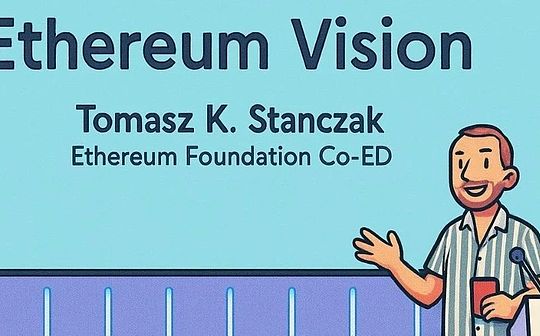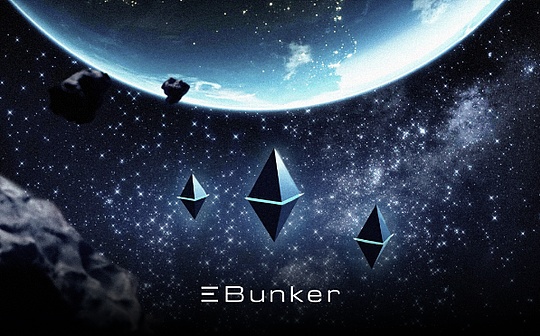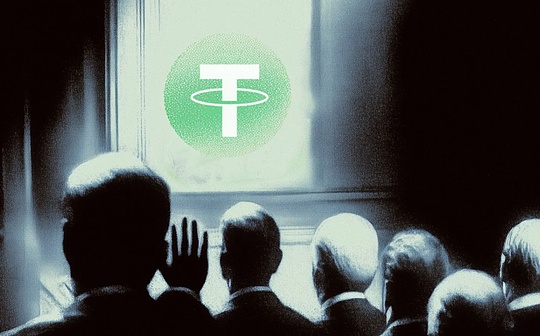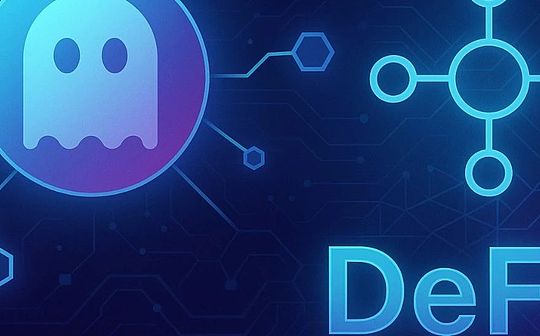
On the evening of June 13, Cobo United Tide invited Cobo co-founder and CEO Shenyu, Merlin Chain Founder Jeff, Solv Protocol Co-founder Ryan Chow, B² Network Product Advocate Stan and Crypto independent researcher DaPangDun to launch a campaign on XSpace, whose theme is “More than HODL, comprehensively explores the possibility of BTCFi in the 10 billion dollar track”, has entered an in-depth discussion on this topic.
Cobo has compiled the core views of all the guests and shared them with Cobo’s users and readers here.
In the past two years, the crypto industry has undergone earth-shaking changes, especially the Bitcoin ecosystem, which has shown a new ecological feature.This is not only reflected in the emergence of the BTC Layer 2 network that carries TVL (now that Bitcoin can participate in on-chain DeFi activities, whether it is lending, stablecoins, or innovative models such as Solv Protocol, CeDeFi, etc.), and the BTC chain that hopes to obtain passive returnsPlayers, as well as a new group of active on-chain users, have gradually formed an ecosystem and infrastructure around these players.
New demands come with new track opportunities.The scale of Bitcoin assets is much larger than Ethereum and stablecoins, so the growth of Bitcoin total value lock-in (TVL) and the growth of funds participating in specific products will bring amazing volume.Shenyu believes that the BTCFi track has great potential and has not been fully developed yet and the market size is very considerable.In the short term, the total market value of BTCFi is expected to reach tens of billions of dollars, even exceeding the historical highest level of the Ethereum ecosystem; in the long term, the total market value of BTCFi is expected to exceed the trillion dollar mark.
In this issue of Cobo X Space, players from all parties of BTC have gathered together to discuss “not only HODL, but also the possibility of fully unlocking 10 billion US dollars of BTCFi.”The BTC ecosystem, which is blooming in all directions, is showing new diversity characteristics, user group stratification and population portraits.
Merlin Chain Founder JeffIt is believed that the active users on the BTC chain are about the order of hundreds of thousands to one million.Unlike Ethereum players, the BTCFi ecosystem has nurtured a group of new types of Bitcoin on-chain users.They don’t care about Gas fees, but focus more on discovering potential assets, especially inscriptions, runes and Meme players. They are passionate about Bitcoin culture and fair issuance concepts, eager for equal profit opportunities, high activity and loyalty, and tend to be highIt has high risk and is more familiar with the use of Bitcoin wallets, but instead feels that Ethereum wallets such as MetaMask are more difficult to use.In terms of attracting large investors and high net worth users, the potential market size and unit price may surpass Ethereum, and the total value lock-in quota may also be higher.The rise of this group of users may inject new vitality into the Bitcoin ecosystem.
In addition to the new types of active chain users, another mainstream user group of BTCFi is institutions and large users.They hold a large amount of Bitcoin in their hands, hoping to obtain solid returns through passive means.However, the market has not yet provided a suitable way to add value, and most of the Bitcoin assets are still lying in cold wallets and not being used.
How to explore this part of the market demand,Let institutions, large accounts and some individual users better utilize the underlying infrastructure of the Bitcoin ecosystem and revitalize the tens of billions of US dollars of BTC assets sleeping in cold wallets. This will be a key issue that needs to be paid attention to in the development of BTCFi.
Big Bitcoin investors and institutional users are inherently more sensitive to risks.In order to capture the needs of this part of BTC users,Cobo Co-founder and CEO ShenyuI think the following points need to be considered:
-
In the long run, as user demand surges,The development and technological upgrade of Bitcoin scripting language will be gradually improved within the next 3-5 years, and ultimately achieve a fully decentralized and license-free solution.But in the transitional stage before this, we will see a large number of multi-party co-management solutions based on multi-party computing (MPC) technology emerge.
-
These transitional solutions can revitalize institutions, large accounts and some individual users, allowing them to better utilize the underlying infrastructure of the Bitcoin ecosystem.Ensure the safety of underlying assets through multi-party coordination and management, reduce the risk of single-point failure, and provide users with profit opportunities on this basis.This may be more in line with their needs for large investors and institutions with lower risk preferences.
-
The biggest weakness of the Bitcoin network is that it is unable to build smart contracts on the main chain, which has led to the ownership of underlying network assets becoming a key constraint on the development of the industry, bringing loopholes and moral risks.
Ryan, Co-founder of Solv ProtocolIt stated: The adoption of hybrid centralized custody and decentralized technical solutions such as Cobo MPC ensures transparent flow of funds and clear ownership, and solves the problem that funds enter the black box under the traditional opaque CeFi model and users have no way to know where to go and control.By separating asset management and custody, Cobo and other focused on secure custody institutions can integrate and collaborate with innovative projects such as Solv, Merlin, and B² Network, which focus on value-added and ecological expansion, providing users with transparent and secure Bitcoin asset management and income value-added solutions.This new model, which is divided by asset custody and asset management, is expected to solve the pain points of the traditional CeFi model and bring about a safe and transparent way to grow returns.
The BTCFi track is vast and can accommodate a large number of startups and innovative attempts.This cycle has absorbed new traffic from AI, BTCFi, crypto payment and other fields, and injected new vitality.Unlike the Ethereum Foundation, the Bitcoin network has no absolute orthodoxy and has a variety of cross-chain solutions, creating huge market opportunities for integrating consensus and liquidity, which to a certain extent is beneficial to Asian entrepreneurs.The BTCFi track has a promising future.
The following are the key points:
How big is the BTCFi market?When will this market truly flourish and no longer rely on existing subsidies or points mechanisms?
Divine Fish:First of all, I think the market size of the Bitcoin Finance (BTCFi) track is very considerable.In the past two years, a large amount of traditional capital has flowed into the cryptocurrency market through ETFs, and currently only Bitcoin and Ethereum have been recognized.Due to its advantages as a hard currency, Bitcoin occupies a large share of the industry as a whole, but has long lacked efficient utilization paths like Ethereum.
Bitcoin asset management is in strong demand, but there are few reliable, safe and stable ways to add value.Its biggest value-added method is to lend Bitcoin as a collateral to obtain other cryptocurrencies for investment operations.If the Bitcoin ecosystem develops rapidly, it will provide more channels for making money for this major asset class.I personally expect that the total market value of BTCFi will reach tens of billions of dollars in the short term, even exceeding the historical highest level of the Ethereum ecosystem.In the long run, the total market value of BTCFi is expected to exceed US$1 trillion and will change with market fluctuations.
This is already a vast space that can accommodate a large number of startups and innovation attempts, as the early mining ecosystem of Bitcoin was worth only hundreds of millions of dollars a year.At present, the main users of BTCFi are institutions and large investors. They hold a large amount of Bitcoin and hope to obtain stable returns through passive methods. However, the market has not yet provided a suitable way to add value, and most of the Bitcoin assets are still lying in the cold wallet.
In the long run, with the surge in user demand, the development of Bitcoin scripting language and technological upgrades will be gradually improved in the next 3-5 years, and ultimately achieve a fully decentralized and license-free solution.
But as a peer-to-peer cash system, Bitcoin’s underlying infrastructure iteration is relatively slow and takes years to achieve full decentralization, allowing us to support permissionless solutions.
In this transitional stage, we will see a large number of multi-party co-managed solutions based on MPC technology as transitional solutions, revitalizing institutions, large accounts and some individual users, so that they can better utilize the underlying infrastructure of the Bitcoin ecosystem.Ensure the safety of underlying assets through multi-party coordination, reduce the risk of single-point failure, and provide users with benefits on this basis.
As entrepreneurs in the Bitcoin public chain field, how big do you think the market size is?What are your unique target customer groups?Do you prefer institutional customers or other types of users?
Jeff:The market size of this track is very large.Bitcoin currently has a market capitalization of about $1 trillion, but the potential size of active Bitcoin assets on the chain may reach hundreds of billions of dollars.Merlin is mainly committed to helping Bitcoin users from the following two aspects:
-
Participate in on-chain DeFi, such as lending, stablecoins, etc., so that Bitcoin can obtain interest-generating capabilities;
-
Cross-chain Bitcoin to EVM-compatible chains and participate in other on-chain DeFi products.
The current industry challenge is also the problem we are trying to solve. The wrap and unwrap capabilities on the retail side, that is, bridging capabilities.Cobo helped solve this problem, with $13 billion to $15 billion in our wallets in the past 45-60 days cross-chain bridging operations.
Another long-term challenge is to bring real benefits to Bitcoin, rather than relying on project points or tokens to make profits, which are highly cyclical.Solv is trying to obtain USD-denominated returns for Bitcoin through quantitative investments and other methods.
In addition to Bitcoin local currency, new Bitcoin assets such as Merlin all in BRC-20 and Ordinals are active in these assets and have greater returns than annualized fixed income.Merlin provides liquidity for these assets, and users can participate in trading and market making.As long as investment is in a bull market, the rate of return will be very considerable, just like the sharp rise in inscriptions and runes at the end of last year.
Attracting users on the first level to release liquidity to the second level, and conducting better transactions, lending and contract operations on the second level is a long-term and challenging process.Merlin’s DEX has generated more than $1 billion in trading volume over the past few months, with daily trading volumes of about $20-30 million.This slow construction method is expected to bring higher returns and more users to the chain itself.
In general, the current industry is still very early, and the development strategies of different chains are different.For Merlin, it is more about how to safely bring new business to the Bitcoin ecosystem in the long run, rather than pursuing short-term trading volume growth.
Stan:The value of BTCFi lies in transforming Bitcoin from passive assets to active assets, which is mainly reflected in three aspects:
-
Leverage Bitcoin security to provide security for a wider network, such as the Stacks project;
-
Improve the liquidity and application scope of Bitcoin and related assets, including layer two networks, etc., and provide infrastructure for Bitcoin native DeFi;
-
Provide cross-chain functions to introduce Bitcoin funds into other DeFi ecosystems and improve capital liquidity.
Therefore, BTCFi target customer base mainly includes three categories:
-
Bitcoin original players: such as miners, holders, etc. BTCFi can meet their needs to earn profits.
-
Other blockchain users and project parties: such as EVM, Solana, etc., BTC layer 2 network can achieve bridging with these ecology.
-
Outside the circle: As the core user group of all blockchain ecosystem expansion, BTCFi can lower their threshold for entering the cryptocurrency field.
Only when the second-layer network at the bottom of the Bitcoin ecosystem has sufficient vitality, users and innovation can BTCFi continue to develop.
Can you estimate the user size of DEX native traders active on the second layer network, including runes and inscription players, and their average asset size?How do you describe these user groups?
Jeff:In terms of user magnitude, active users on the BTC chain are about the order of hundreds of thousands to one million, and can be observed through head assets and NFT data.Most of them are new on-chain users. They may have been just cryptocurrency speculators before, and they are more familiar with using Bitcoin wallets. Instead, they think MetaMask is very difficult to use.
These users have relatively high personal net worth.Because the transaction fees of Bitcoin are high, ordinary transactions require dozens to hundreds of dollars, which naturally filters out the hair-fighting party who is unable to bear the high handling fees.Therefore, users on the Bitcoin chain do not care much about the handling fee, but pay more attention to how to discover potential assets.For example, in the early days of Merlin, hundreds of millions of dollars in BRC20 assets and Ordinals NFTs were quickly pledged, showing that these users are active and have strong financial strength.
Typical user portrait:I like Bitcoin culture, believe in the concept of fair issuance, and have a strong demand for equal benefits through airdrops.As a new type of Bitcoin on-chain user group, future development is worth looking forward to, and Bitcoin’s programmability potential needs to be further explored and utilized.
In general, this is a new type of active on-chain user group that likes Bitcoin culture and has strong economic strength. Their rise and development may inject new vitality into the Bitcoin ecosystem.
Ryan has rich entrepreneurial experience in the Ethereum community. How is the difference between providing BTC financial services in the Bitcoin community and the Ethereum community?Solv has been making compliance attempts and attracting large compliant investors. Is there an opportunity to introduce these investors into the Bitcoin ecosystem?
Ryan:The user group, spiritual concepts and infrastructure of the Bitcoin ecosystem are very different from the Ethereum ecosystem.Providing BTC financial services in the Bitcoin community faces the following major differences and challenges compared to the Ethereum community:
-
Bitcoin infrastructure is relatively backward and has a higher degree of decentralization at the bottom, making it much more difficult to build infrastructure and improve user experience than Ethereum;
-
The high Gas fees make it really more difficult to carry out retail business in the Bitcoin ecosystem.
But the Bitcoin ecosystem also has its unique advantages and characteristics:
-
The Bitcoin ecosystem has huge high net worth user market and total value lock-in (TVL) potential.First of all, the scale of Bitcoin assets is indeed much larger than Ethereum and stablecoins, so the growth of Bitcoin total value lock-in (TVL) and the growth of funds participating in specific products will bring amazing volume.Secondly, the average personal holdings of large Bitcoin investors (holding more than 1,000 Bitcoins) may be higher than the average level of large Ethereum investors.This means that the average customer price and personal holdings of the Bitcoin ecosystem may be higher.
-
The Bitcoin user base is relatively conservative and is significantly different from the Ethereum ecosystem users, creating opportunities for opening up new fields.
In addition, there are two other important differences between the Bitcoin ecosystem and the Ethereum ecosystem:
1) The Bitcoin ecosystem lacked innovation opportunities in the past, but this cycle has absorbed a large amount of new traffic from AI, BTCFi, password payment and other fields, and injected new vitality.
2) Unlike the Ethereum Foundation, the Bitcoin network has no absolute unified camp, and there are many cross-chain solutions, creating huge market opportunities for integrating consensus and liquidity, and to a certain extent, it gives Asian entrepreneurs greaterChance.
Bitcoin’s higher decentralization makes it relatively easier for compliance institutions to participate.
Solv is doing BTCFi-related businesses on all public chains. For your BTCFi ecosystem, are you worried that partners or BTCFi project parties will become this round of Cyclical Centralized Finance (CeFi) problem institutions in the future?How do you view this risk?
Ryan:The most obvious weakness of the Bitcoin network is that it cannot build smart contracts on Layer 1.There is currently no such environment for the Bitcoin main network, which makes it very difficult to implement smart contracts at this stage.In this case, the ownership issue of underlying network assets becomes a key issue that limits the development of the entire industry.
Because the Bitcoin network cannot implement smart contracts in Layer 1, asset ownership issues have become a key constraint on industry development, bringing vulnerabilities and moral risks.
This has led to the emergence of a hybrid solution such as Cobo, Antalpha, which combines centralized custody and decentralized technologies, ensuring that the location and flow of funds are transparent and traceable.While some question the tendency to centralize, unlike traditional CeFi, this model ensures transparency and ownership definition of capital flows.The fundamental problem with CeFi is that after the funds enter the black box, users cannot know where they go and cannot control them, which brings opacity to the profit margin.By separating asset management and custody, we will allow Cobo and other focused security custody institutions to integrate and collaborate with innovative projects such as Solv, Merlin, and B² Network that focus on value-added and ecological expansion to provide users with transparent and secure Bitcoin asset management and income value-added solutions.This new model, which is divided by asset custody and asset management, is expected to solve the pain points of the traditional CeFi model and bring about a safe and transparent way to grow returns.
Can you share the exciting new projects or new development trends I have been paying attention to recently?
DaPangDun:Regarding BTCFi, I analyze it from the following aspects:
Security is key, including wallet security, asset ownership protection security, and prevention of systemic risks (such as the risk of fluctuations caused by DeFi dolls).
BTCFi needs to meet basic conditions: one is the assets that can be linked (including Bitcoin itself); the second is the diversified Fi forms (borrowing, pledge, etc.); the third is the implementation path (sidechain, OP Code, etc.).
After the last round of DeFi Summer, the market’s ability to withstand security risks has been reduced, guiding BTCFi toward a safer and more reliable direction.
Stablecoins play an important role in BTCFi and are more inclined to users who are willing to participate in Fi.
The market will test which path of realization will win in the end through a hundred schools of thought.
The ultimate goal of Fi is profit, and each project will realize profit through different forms (pled, borrowing, etc.).
In general, BTCFi needs to focus on security, enrich asset forms, explore multiple implementation paths, and introduce stablecoins, etc. The ultimate goal is to create benefits for users.
Does Merlin Chain have plans to partner with Tether or Circle to introduce native stablecoins?What are the main difficulties faced?
Jeff:Currently, since the BTC Layer 2 solution (mainly side chains) cannot provide absolute security guarantees, it is difficult to introduce compliant stablecoins.Although USDT, USDC, etc. can be bridged, user trust in the security of the bridging solution is key.
At the same time, BTC users do not have much actual demand for stablecoins, but are more trading at BTC-based.Therefore, due to technical trust issues in the short term, it is difficult to fully trust the current Layer 2. The introduction of stablecoins such as Tether and Circle is still a medium- and long-term goal.At present, it may focus on developing native projects based on BTC, including over-collateralized stablecoins, and moderately introduce USDT, USDC, etc. rather than large-scale introduction of compliant stablecoins.
What are the challenges and resistances faced in the development of BTCFi ecosystem?What obstacles will traditional asset management institutions or ETH asset management track projects face when joining?
Divine Fish:The biggest obstacle facing the BTCFi ecosystem is that the development speed of the BTCFi ecosystem is far behind the speed of industry application innovation, which is due to the slowness of Bitcoin’s underlying upgrade and iteration.The decentralized nature of Bitcoin determines that its upgrade requires broad consensus in the community, and the process is complex and long, which forms a sharp gap with the rapid iteration expected by entrepreneurs.Therefore, the BTCFi ecosystem will be more diversified and diversified in a long period of time, and various innovative attempts emerge one after another.
Bitcoin lacks official support and unity like Ethereum, which leads to a more diversified and diversified BTCFi ecosystem, and projects face greater challenges when balancing their balance sheets.However, this also brings some unique advantages to the BTCFi ecosystem.For example, the underlying Bitcoin adopts mechanisms such as multi-signature and MPC, which can provide more detailed permission separation and asset monitoring capabilities for large users and institutional users, with relatively lower risks and attractive to large users and institutional users.
Ryan:From a regulatory perspective, Ethereum outlines the “red line” and “green line” for the development of BTCFi, providing a reference for the latter.At present, infrastructure such as Bitcoin L2, sidechain and Lightning Network have not yet caused obvious regulatory issues.
In terms of asset custody, whether Bitcoin or Ethereum is concerned, certain compliance requirements need to be met, because it involves the transfer of asset ownership.
In the field of asset interest generation, Bitcoin has an advantage.Since Bitcoin is clearly defined as a commodity, the relevant interest generation and management regulations are theoretically more relaxed.Whether Ethereum staking belongs to securities is still being discussed, and there is a gray area.Currently, Ethereum staking does not require KYC and anti-money laundering measures, but some exchanges are warned by the SEC when providing related products, indicating that there is uncertainty.In the Bitcoin resurgence track, some products have not fully considered regulatory compliance, but have not yet caused major regulatory issues, indicating that this field is still in a gray area.However, Bitcoin interest-generating products often need to operate in compliance due to their asset attributes.For example, some products on Solv require KYC to circumvent regulatory risks.Through DeFi and decentralized exchanges, retail investors without KYC can also participate in these products.
The previous round of Bitcoin growth was user education and expansion driven by L2 layer, and the next stage of asset interest generation may become a new growth driver.In this process, compliance issues still need to be paid attention to.








